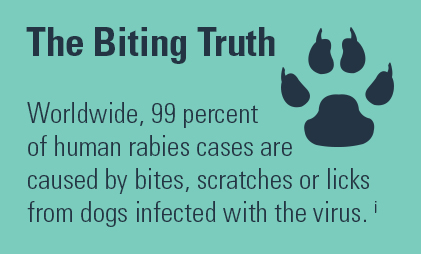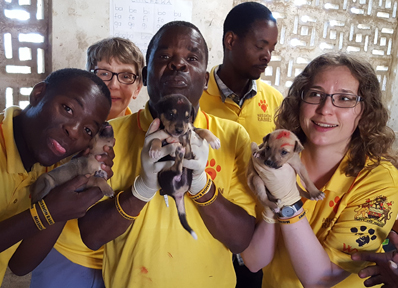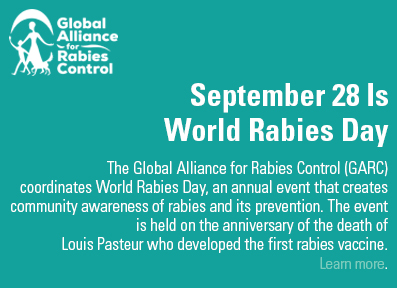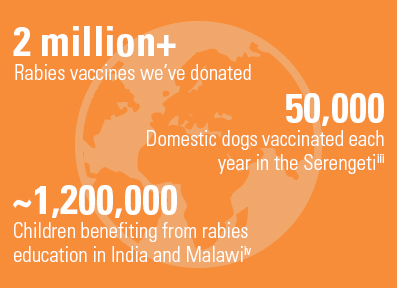On the Attack
Sweat drips from veterinarian Agneta Gustafsson’s face and neck as she leans in to vaccinate her 200th dog of the day. She’s been at it since dawn in blistering heat in Goa, India, where volunteers have been covering up to fifteen miles a day in search of stray and owned dogs that need to be vaccinated against rabies.
“Rabies is a horrible, deadly disease for animals and humans, but it’s 100 percent preventable with vaccines,” says Gustafsson, Associate Director, Scientific Marketing, Merck Animal Health, and a volunteer with Mission Rabies. “Organizations and volunteers have been working together for years to eliminate rabies, and we’re making steady progress.”

A Devastating Toll on Life
Rabies is a zoonotic disease, which means it is transmitted from animals to humans. According to the World Health Organization, it occurs in more than 150 countries, with the highest infection rates in Africa and Asia.
Approximately 60,000 people die each year from rabies, especially in areas where health care is limited or difficult to access. Children in developing countries are at the highest risk for exposure. Globally, 100 children die from rabies each day.ii

Mission Possible
More than 15 years ago our company joined the fight against rabies by supporting the Afya Serengeti Project and, later also Mission Rabies, which formed in 2013. During this time, we have donated more than two million rabies vaccines to support dog vaccination programs in many countries worldwide such as India, Malawi, Sri Lanka, Tanzania and Uganda.
“Teams vaccinated 35,000 dogs in one month alone in Malawi,” says Marta Nowak, Specialist, Intergovernmental Veterinary Health, Merck Animal Health, and a recent volunteer with Mission Rabies in Malawi. “I’m not a veterinarian, but there was plenty for me to do, like preparing vaccines, marking dogs that had been vaccinated and entering rabies data.”
The experience was unforgettable for Nowak. “People in Malawi are terrified of rabies. Many people know someone who has died from it. By reducing rabies cases, we helped the people feel safer.”
The Goal: Eliminate Rabies
Although rabies is extremely rare in many countries, it continues to be a significant burden in parts of Africa and Asia. The Global Alliance for Rabies Control (GARC) has set a goal of eliminating rabies from the planet by 2030. Many organizations are partnering to help achieve this goal.
Volunteers play a big role in the effort. “The dog catchers bring in dog after dog—sometimes, three at a time—yelling, ‘Vaccine! Vaccine!’ It’s intense,” says Gustafsson. “But you keep going from dawn to dusk, often in extreme heat and primitive conditions, because you know you are saving lives.”


iWorld Health Organization
iiMission Rabies
iiiAfya Project, Serengeti
ivMission Rabies
